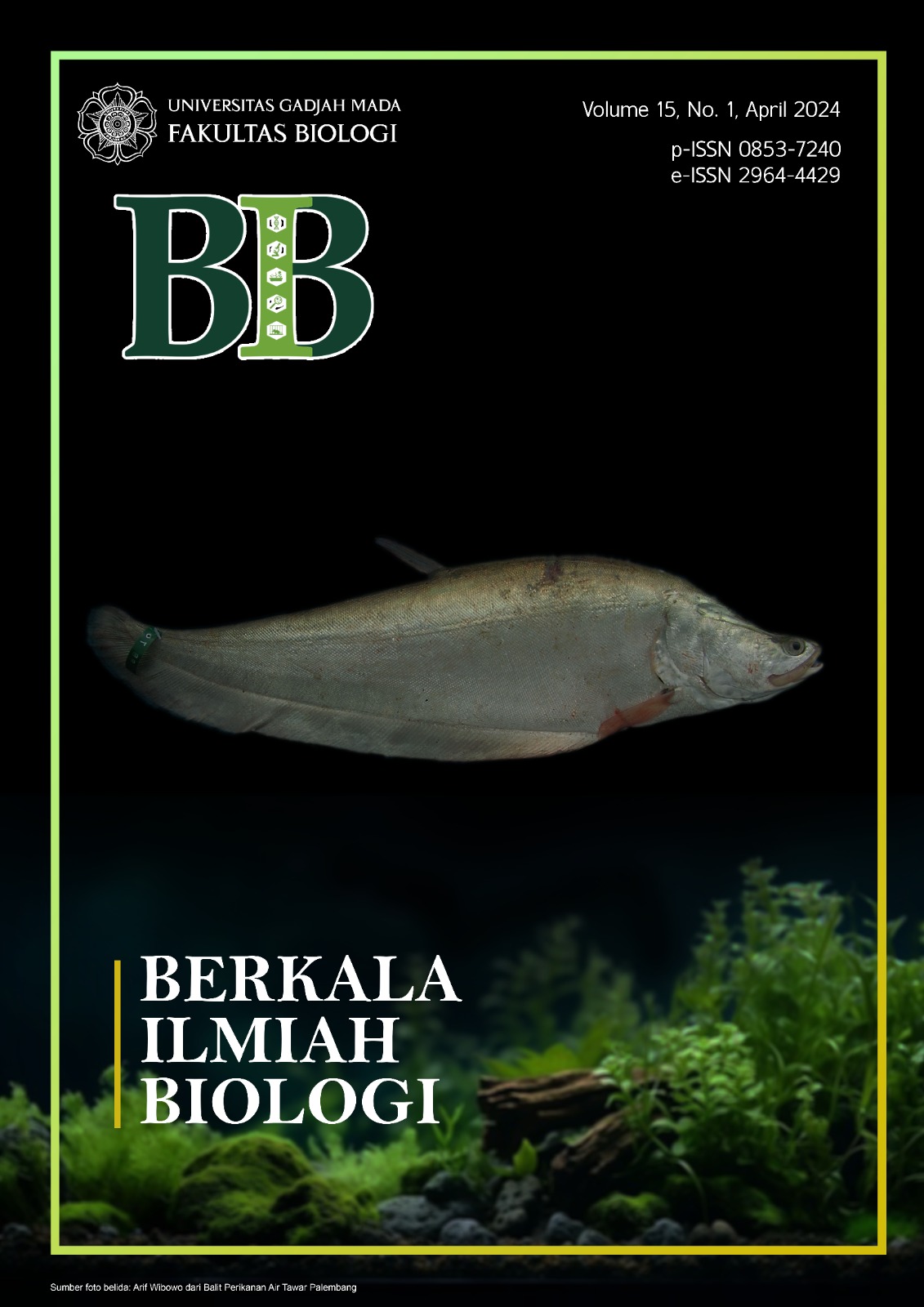Single-Dose Oral Toxicity Study of Chloroform Extract of Kaffir Lime (Citrus hystrix DC.) Leaves in Wistar Rats (Rattus norvegicus Berkenhout, 1769)
Isi Artikel Utama
Abstrak
Leaves of kaffir lime (Citrus hystrix) are commonly used as a seasoning in various Indonesian and Southeast Asian dishes. Phytochemical studies reported various secondary metabolites that possess medicinal properties. Before exploring their potential as therapeutic agent, a series of toxicity studies must be conducted to assess the toxicity and safety levels. This research aimed to study the single-dose acute oral toxicity of chloroform extract of kaffir lime leaves (CECHL) in female Wistar rats (Rattus norvegicus) as experimental animals. The procedure followed OECD Test Guideline No.420 with the dose 2000 mg/kg bw for 14 days (Sighting study). Parameters consisted of mortality, clinical signs of sublethal effect based on changes in general appearance and daily activity/behavior, hematological profile, and blood clinical biochemistry. Neither mortality nor sublethal effects were found during the experiment. All blood parameter values (erythrocytes, leukocytes, thrombocytes, ALT, AST, creatinine, BUN, glucose, cholesterol, and triglycerides) were within reference interval, indicating that CECHL is not harmful to normal physiology. In conclusion, single-dose oral administration of CECHL is safe, no-observed-adverse-effect-level (NOAEL) at dose 2000 mg/kg bw or included in Category 5 based on the Globally Harmonized System of Classification and Labeling of Chemicals (GHS).
Rincian Artikel

This work is licensed under a Creative Commons Attribution 4.0 International License.


